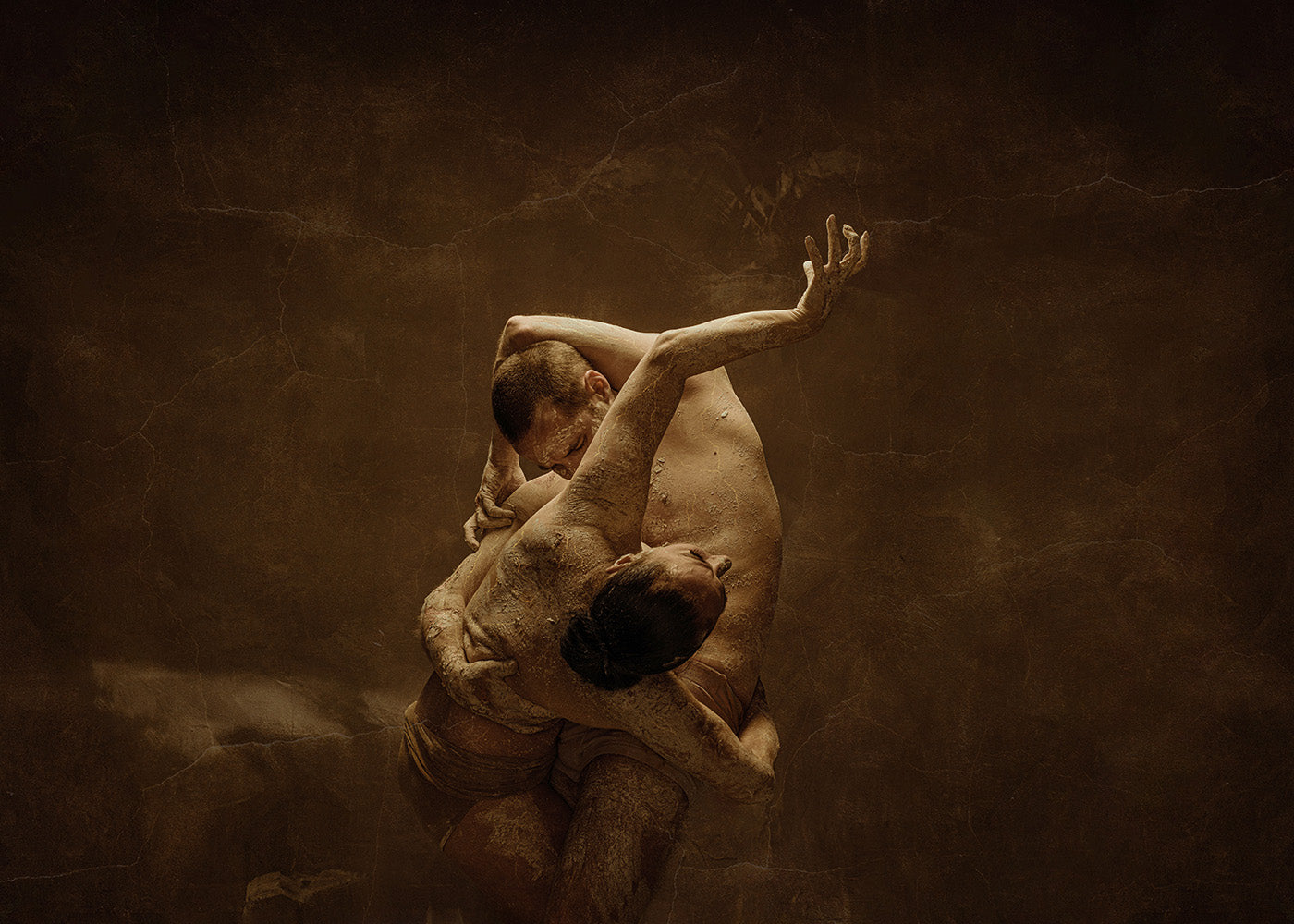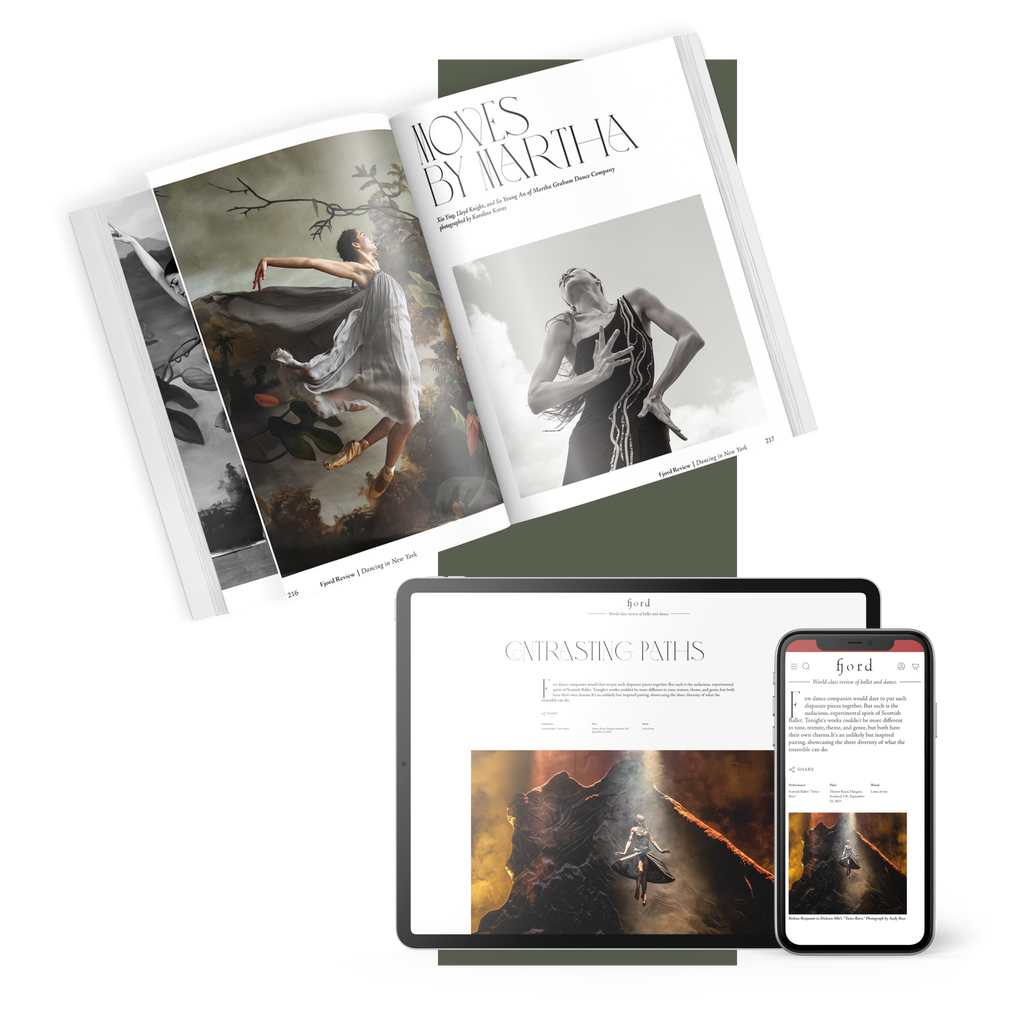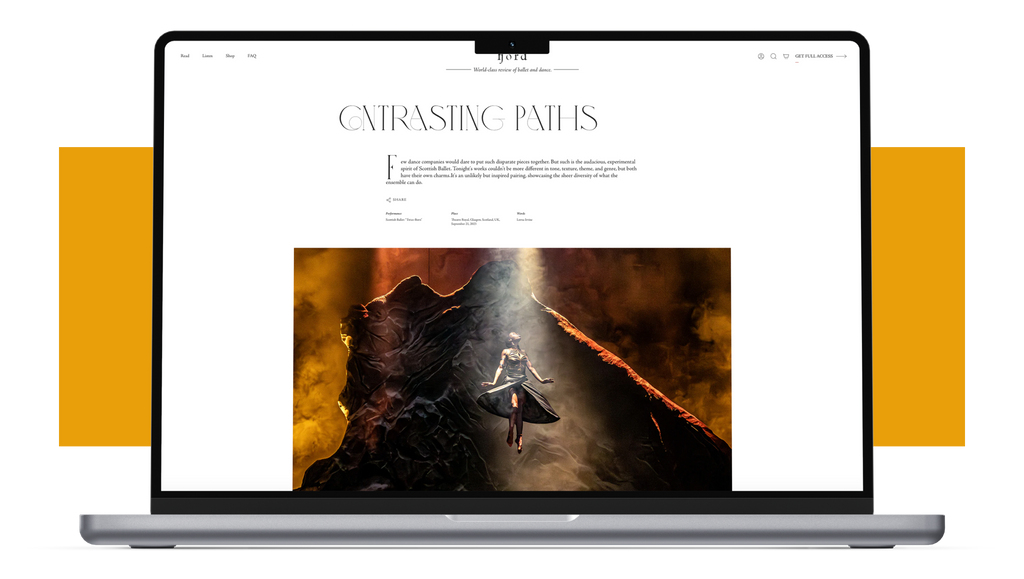Audacity of Dance
If there’s anybody who embodies ‘rizz’—charisma in today’s coolspeak—it’s dancer, choreographer, and filmmaker Benjamin Millepied.
Plus
World-class review of ballet and dance.
The wavering, crepe paper-thin voice of an old man sings on a loop: “Jesus' blood never failed me yet, never failed me . . . yet, Jesus blood . . . never failed me yet / This one thing, I know, for he loves me . . . . So.” This is the first track of the soundtrack of the delicate, beautiful film Worn, screened through the Byre Theatre St Andrews, and could only be an appropriate choice to open. The heartbreaking track, by composer Gavin Bryars, samples the singing of a homeless man recorded on the streets, a vulnerable man clinging to his faith like a branch in a storm. So too, do the dancers cling, to nuances and to each other.

“Worn” by Errol White and Davina Givan. Photograph by Mihaela Bodlovic


“Uncommonly intelligent, substantial coverage.”
Already a paid subscriber? Login
If there’s anybody who embodies ‘rizz’—charisma in today’s coolspeak—it’s dancer, choreographer, and filmmaker Benjamin Millepied.
PlusOne might easily mistake the prevailing mood as light-hearted, heading into intermission after two premieres by Brenda Way and Kimi Okada for ODC/Dance’s annual Dance Downtown season. Maybe this is just what we need to counter world events, you may think. But there is much more to consider beneath the high production values of this beautifully wrought program. Okada, for instance, folds a dark message into her cartoon inspired “Inkwell.” And KT Nelson’s “Dead Reckoning” from 2015 reminds us the outlook for climate change looms ever large.
PlusIt’s not every choreographer who works with economists, anthropologists, neuroscientists and cognitive scientists, not to mention collaborating with the Google Arts & Culture Lab and the Swedish pop group ABBA, but Wayne McGregor wouldn’t have it any other way.
PlusDance scholars have been remarking on the great Trisha Brown nearly from the day she first stepped into Robert Dunn’s class—the genesis of Judson Dance Theater—in the 1960s.
FREE ARTICLE
comments